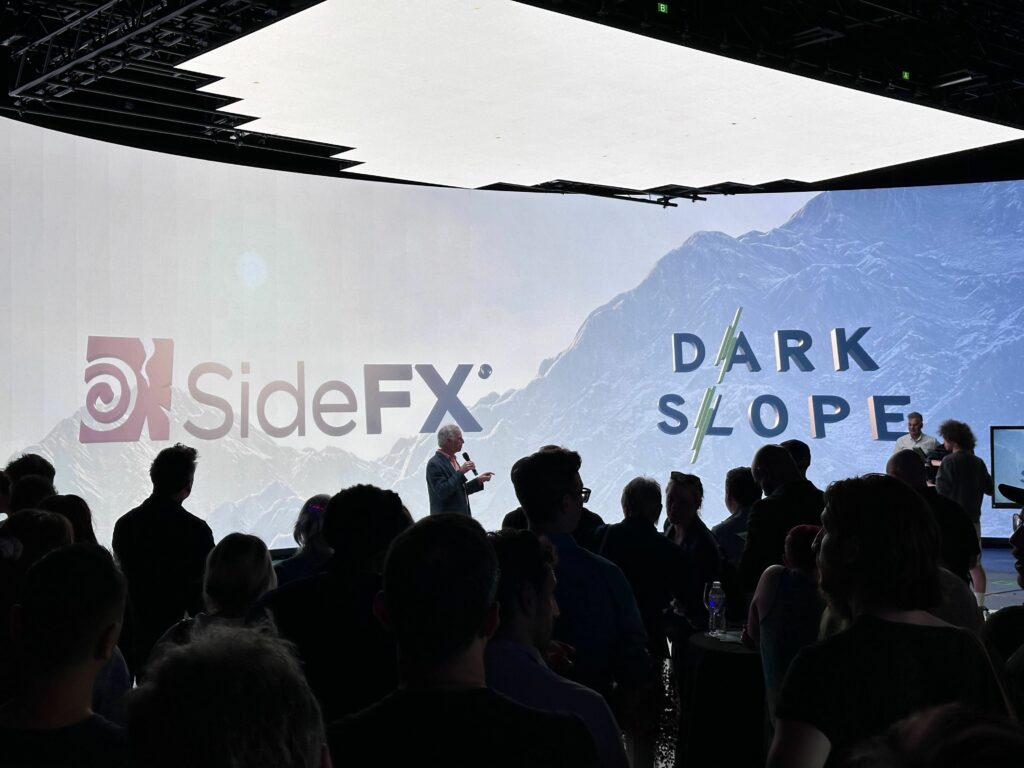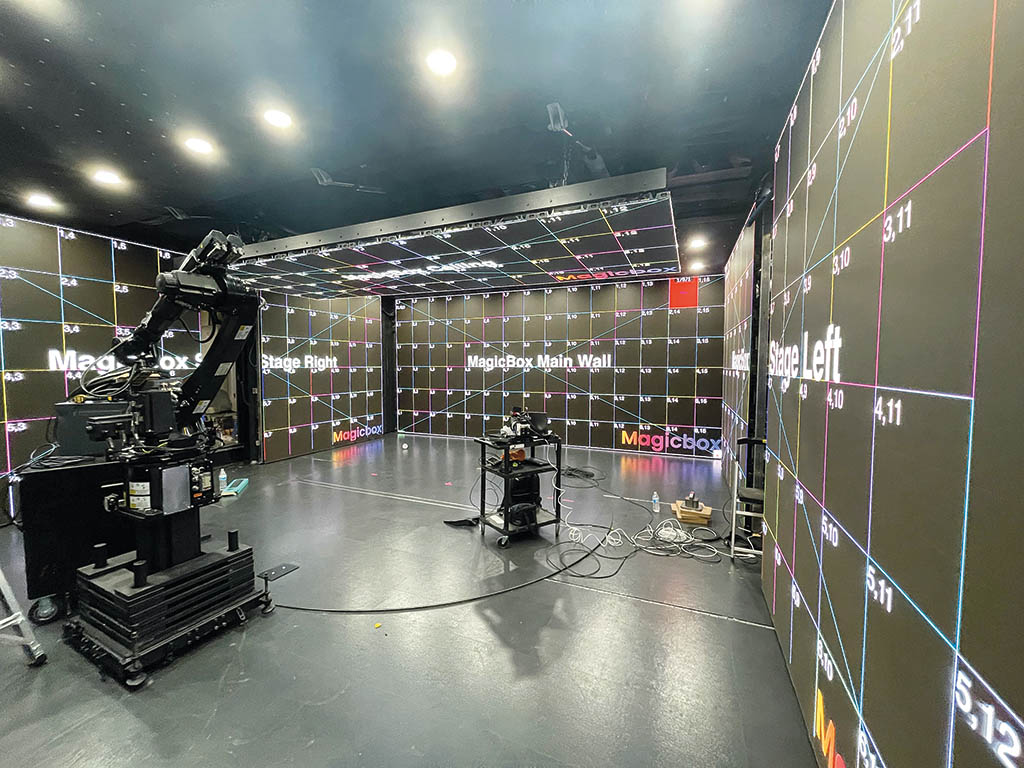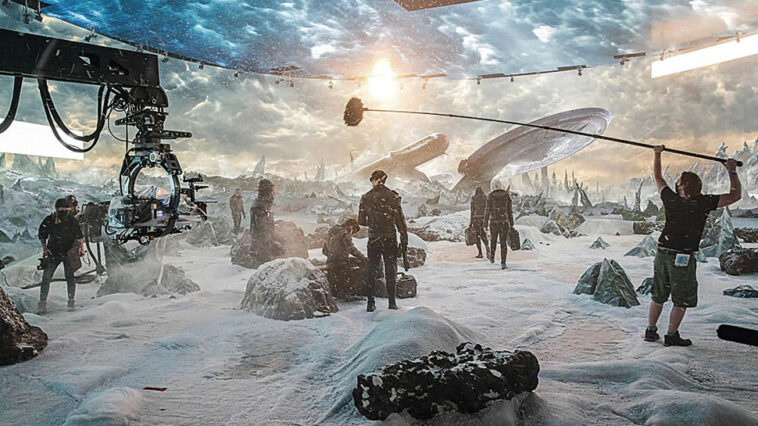As with any tool in the film and television industry, the LED volume is being shaped by technological advancements, budgetary requirements and artistic demands, which means the application and capability of the virtual production methodology is constantly changing.
“From the outside looking in, it seems that the standardization of the previs process with LED volume production will be integral to broadening adoption of LED volumes,” states Tim Walker, Sr. Product Manager at AJA Video Systems. “Most large LED volume studios develop and leverage at least some of their own tools to fit their needs because there isn’t one cookie-cutter solution. However, once you hit ‘cookie-cutter status’ much wider adoption is possible as the costs and expenses come down.”
Some on-set roles have become even more critical within LED volume such as the DIT. “The DIT is responsible for working with the DP and/or director to ensure what is being captured will meet the demands of final color by monitoring the desired creative look on set for dailies, post-production, visual effects and ultimately final color grade,” Walker notes. “The volume introduces another variable in creating and maintaining that look, which the DIT will ultimately have some responsibility for and has the ability to assist in making any on-set color grading decisions that will help the overall production succeed early in the production process.”
“We have a teaming agreement where we can use the stage and [Dark Slope studio] can use Houdini, We want to push Houdini to be more real-time through this partnership, and we’re going to learn about production that we’re only touching with our technologies.”
—Kim Davidson, President/CEO, SideFX, and VES Board Chair

The emergence of Virtual Art Department services has reshaped the visual effects process and the types of stories being told. Explains Tamburrino, “Firstly, it can help screenwriters understand the worlds they’re writing for, how actors will interact with them and enhance the creative ideation of a film. Secondly, visual effects and art departments are involved at much earlier stages of pre-production, basically when the concept and the ideation starts, and that helps filmmakers have visual reference to tell better stories. In cases where content is captured on greenscreen, it’s very difficult even for established screenwriters, directors and DPs, not to mention all the other departments working traditionally in the film set, to imagine what the world might look like. Finally, shooting on an LED volume can give creative control back to the filmmakers, which has been lost to some degree with the traditional process in the 12-plus months of post-production/VFX after principal photography, where a film’s creative process often ends up out of the creative control of the filmmakers.”

“The big thing that has changed is how easy it is to do this at all,” observes Adrian Jeakins, Director of Engineering at Brompton Technology. “Back on The Mandalorian Season 1, it was the industry’s brightest minds figuring out how to get all of this to work, and there were no YouTube tutorials to follow. Now, the barrier to entry is much lower, which is amazing. For Brompton, as the LED part of the process, we’ve seen a rapid evolution in terms of the amount of flexibility and creative control that you had on those early volumes, to now. Initially, there was just a narrow range of settings that would work, and anything beyond those would break. Furthermore, you could only have one camera. We now have features like ShutterSync and Frame Remapping, which enable filmmakers to do so much more with virtual production.”
LED volumes excel in capturing certain shooting scenarios. Jeakins adds, “Virtual production is indisputably the best method for driving shots that are challenging on greenscreen because you have reflections everywhere. Again and again, we’ve seen filmmakers try virtual production for driving shots, and they love the experience. Generally, virtual production makes a lot of sense for episodic television because you’re pushing for feature film quality but don’t have a feature film budget. And you can easily reuse the same environments throughout a season or more. I’d say one of the biggest areas for growth is in traditional broadcast studios. Virtual production greatly improves the experience for talent. Advertising is also an enormous growth area. Advertising is a fast-paced business, and the creatives have different requirements in terms of photorealism, so they can take advantage of the flexibility of this technology.”

Among the technological advances is the ability to populate LED walls with volumetric video characters and crowds. “It’s exciting to see people realize what LED walls are capable of on an ongoing basis,” states Piotr Uzarowicz, Head of Partnerships and Marketing at Arcturus. “LED walls were limited in that you could put people on them because the only way to do so was as two-dimensional characters. If the camera moved, it destroyed the illusion of a person. But now that the characters on that wall can be volumetric and three-dimensional, it allows for the camera to shift and still represent that person on the LED wall in a truthful way. If you put them as secondary or background or distant characters, you won’t be able to tell the difference between a volumetric character and a real person.” To assist with the rendering, not everything is treated with the same level of detail. Uzarowicz says, “The software automatically renders characters that are closer to the camera at a higher resolution than the ones which are further away. Depending on how the camera moves, the characters are reanimated to higher or lower resolutions.” Scenes can be treated more realistically. Uzarowicz adds, “For example, where it might have been complicated to reproduce a city street with a café in the background and our characters are on the corner, that can now be reproduced realistically with a LED wall because we can populate that scene as if it were Manhattan. Lots of people running around back and forth, and we don’t need to use extras, which makes it more affordable for productions coming into that space, and more manageable in that you don’t need as large a crew to deal with hundreds of extras. You can manage all of those things in pre-production and have that realism for your principal actors during production so they can see the environment around them and have something to respond to.”
“AI-generated content will be huge in this area,” believes Ella Kennea, Production Manager at Dimension Studio. “We’re already seeing huge strides in upscaling technology, but we’re also excited about the progress in generative AI in quickly building assets and responding to creative feedback.” All departments need to become familiar with the technology. “It can’t be stressed enough that education and more hands-on experience for production heads of departments is crucial to the success of virtual production,” remarks James Franklin, Virtual Production Supervisor at Dimension Studio. “Also, education specifically around the content creation process. Directors and DPs have an enormous amount of creative opportunity there; they should definitely be getting involved earlier!” There are those educating themselves. “We’re seeing DPs, DITs and directors using bespoke tools on set, which enables them to directly make the changes they want,” Franklin notes. “Developments to Unreal Engine allow us to use high poly-count assets which is great for quick LiDAR scans. And as the industry matures, procedures are becoming more established. There is now much more experience on set and less of the unknown.” The spotlight should be solely on LED volumes.


Dark Slope and SideFX have collaborated to launch an advanced virtual production stage, the second largest LED volume in Toronto. Dark Slope had their launch party in Toronto in early June. Speaking at the event was Kim Davidson,President and CEO of SideFX and current VES Board Chair. (Image courtesy of SideFX).
